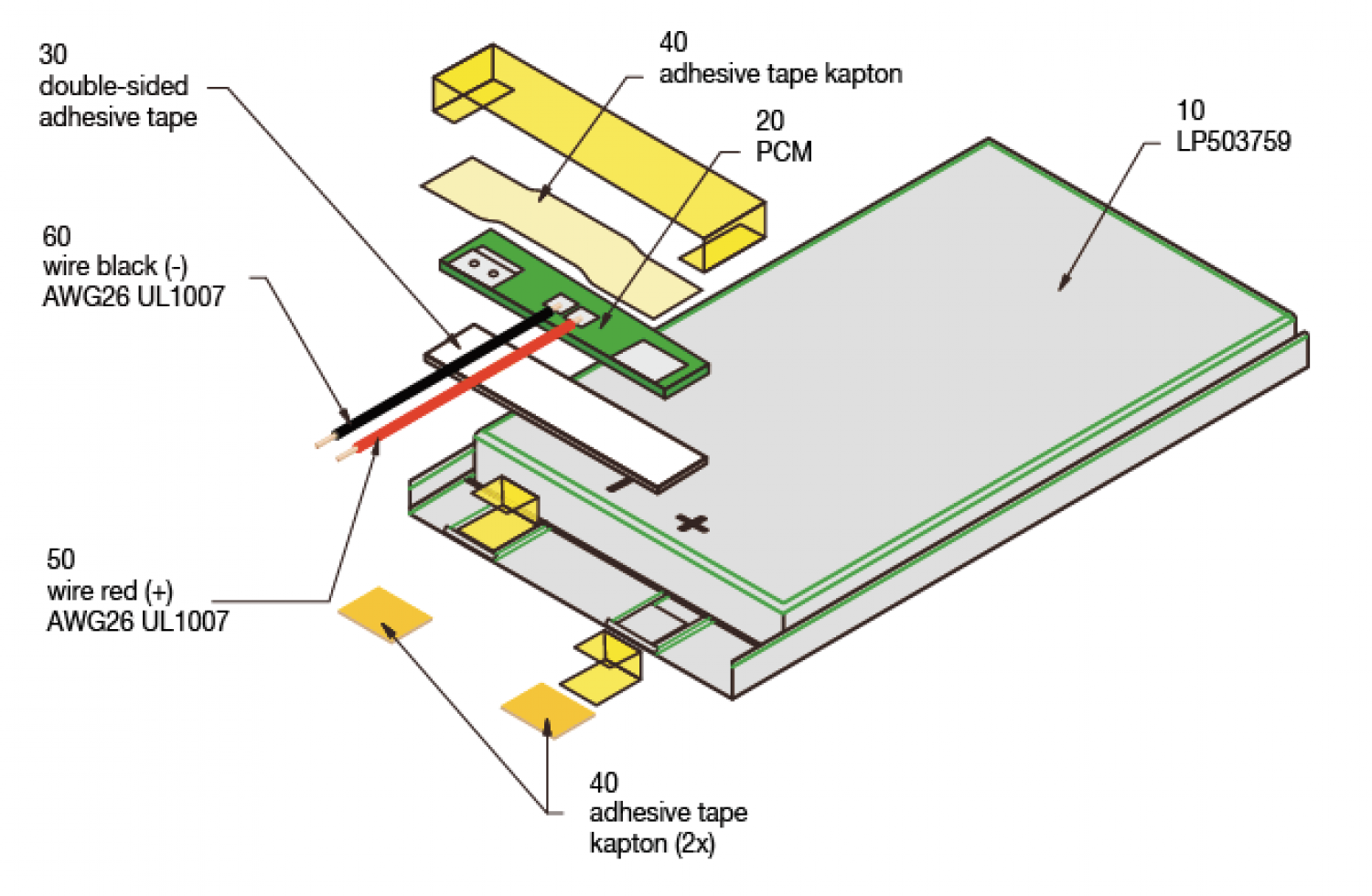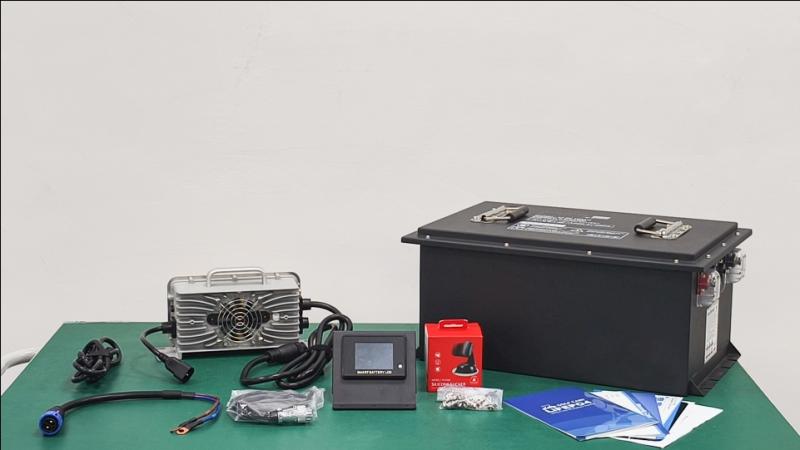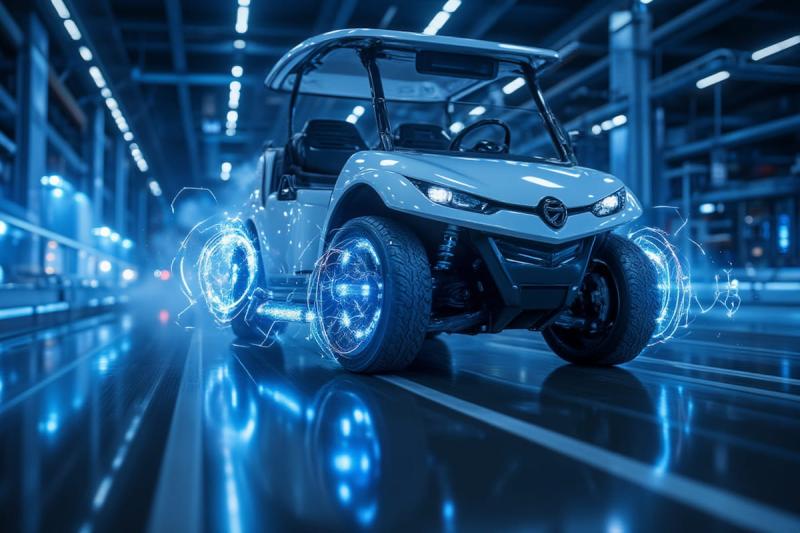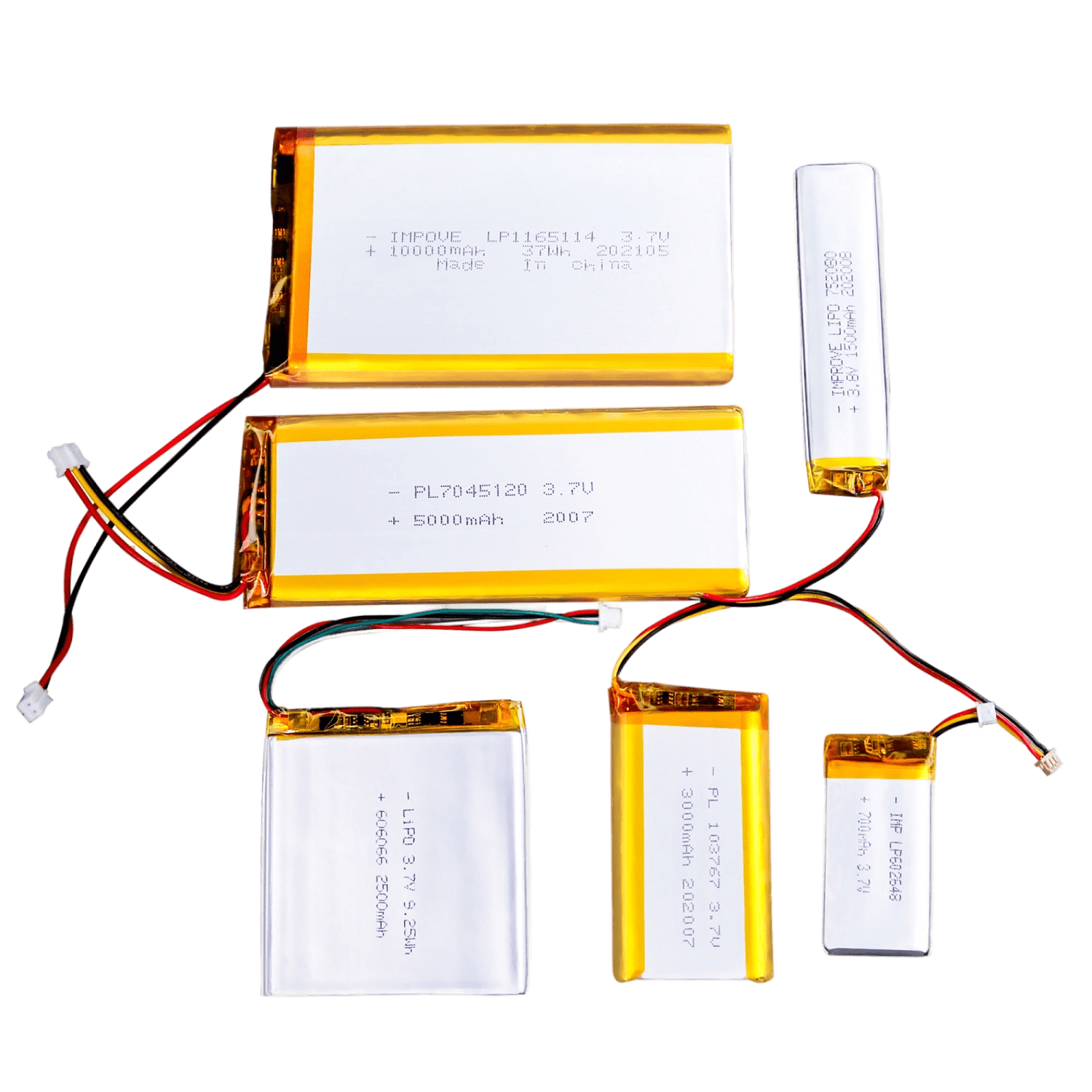Lithium polymer battery can be divided into liquid lithium ion batteries, polymer lithium ion batteries or plastic lithium ion batteries, depending on the electrolyte materials used. The anode and cathode materials used in Lithium polymer battery are the same as liquid lithium ion. The cathode materials are divided into lithium cobalt acid, lithium manganese acid, ternary material and lithium iron phosphate material, and the negative electrode is graphite. The working principle of the battery is basically the same. The main difference is in electrolytes. Liquid lithium-ion batteries use liquid electrolytes, while Lithium polymer battery are replaced by solid polymer electrolytes, which can be either "dry" or "colloidal". Currently, most use polymer gel electrolytes.
Classification
- Giganotonic solid Polymer Electrolyte Lithium ion battery Electrolyte is a mixture of polymer and salt, the battery has high ionic conductivity at room temperature and can be used at room temperature.
- Chauvinistic gel-gel polymer electrolyte lithium ion battery means that additives such as plasticizers are added to solid polymer electrolytes to improve ionic conductivity and enable the battery to be used at normal temperature.
Because Lithium polymer battery replaces liquid electrolyte with solid electrolyte, compared with liquid lithium ion battery, Lithium polymer battery has the advantages of thin shape, arbitrary area and arbitrary shape, so the aluminum plastic composite film can be used to make the battery shell, so as to improve the specific capacity of the whole battery; Lithium polymer battery can also use polymer as the cathode material, and its mass specific energy will be more than 20 percent higher than the current liquid li-ion battery. Lithium polymer battery has the characteristics of miniaturization, thinness and light weight. Therefore, polymer batteries in the market will gradually increase.
Lithium polymer battery have the following characteristics:
- Flexibility in shaping; Higher mass specific energy (3 times of MH-Ni battery); 3. Wide electrochemical stability window, up to 5V; 4. Perfect safety and reliability; 5. Longer cycle life, less capacity loss; 6. High volume utilization.
Principle of Lithium polymer battery:
There are two types of ion batteries: liquid lithium ion battery (LIB) and polymer lithium ion battery (PLB). The liquid lithium ion battery refers to the secondary battery in which Li+ embedded compound is positive and negative. Lithium compounds LiCoO2, LiNiO2 or LiMn2O4 are used in the positive electrode, and li-carbon interlaminar compound LixC6 is used in the negative electrode. The typical battery system is:
(-) C | LiPF6 - EC + DEC | LiCoO2 (+)
The positive reaction, reduction reaction: Li1 - xCoO2 + xLi+xe - = LiCoO2
Negative reaction (oxidation reaction) : Lixc6-xe-=6C+xLi+
Total battery reaction: Li1-XCoO2 +LixC6=LiCoO2+6C
The principle of Lithium polymer battery is the same as that of liquid lithium, the main difference is that the electrolyte is different from liquid lithium. The main structure of the battery includes three elements: positive electrode, negative electrode and electrolyte. The so-called Lithium polymer battery means that at least one or more of these three main configurations use polymer materials as the main battery system. In the current Lithium polymer battery system, polymer materials are mainly used in the positive electrode and electrolyte. The anode materials include conductive polymer or lithium ion batteries used in inorganic compounds commonly, use solid electrolyte or colloidal polymer electrolytes, or organic electrolyte, lithium ion technology commonly used liquid or gel electrolyte, so need to accommodate combustible solid secondary packaging, the active ingredient, this increases the weight, It also limits dimensional flexibility.
The new generation of Lithium polymer battery can be thin in shape (ATL battery thinness up to 0.5 mm, the thickness of a card), arbitrary area and arbitrary shape, greatly improve the flexibility of battery modeling design, so that can meet the product needs, made of any shape and capacity of the battery. Provides equipment developers with some design flexibility and flexibility in power solutions to maximize their product performance. At the same time, the unit energy of Lithium polymer battery is 20% higher than the current general lithium ion battery, and its capacity, environmental performance and other aspects are better than lithium ion battery, there are some improvements.








